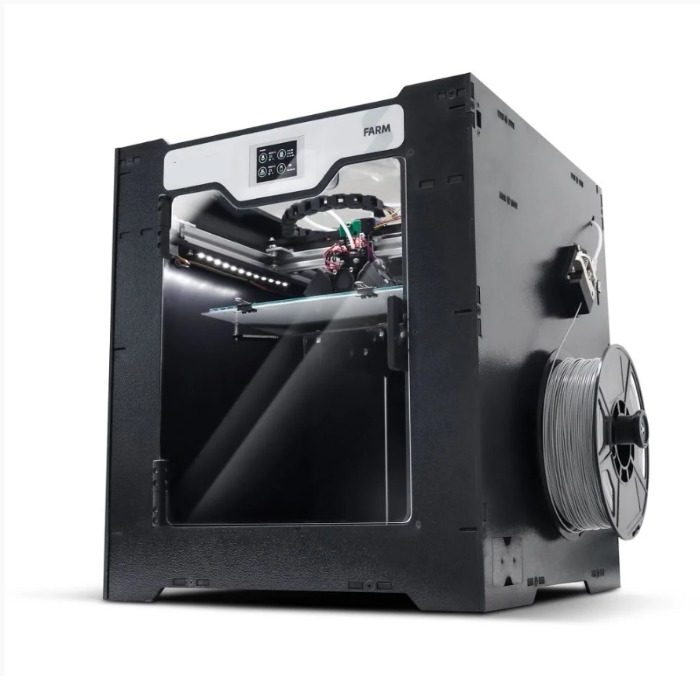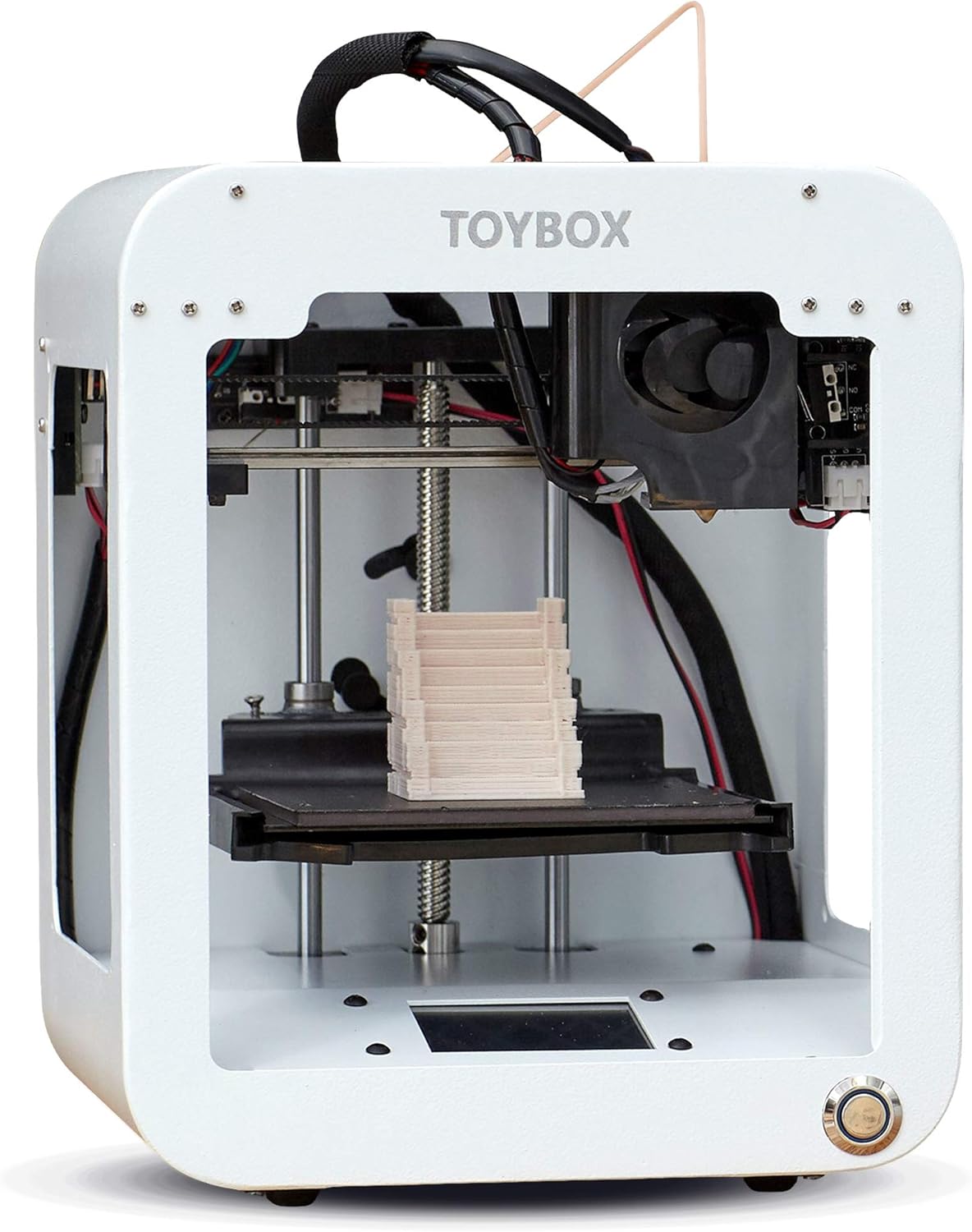Compare FARM vs Toybox
Comparison between the best 3D printers
Choose the best 3D printer at the best price. The cheapest 3D printers are here.
Buy a 3D printer here with 3D Fila.
 |
 |
|
| Model | FARM |
Toybox[BUY Toybox] |
| Printing Material | Filament | Filament |
| Buy Filament for Sethi 3D FARM | Buy Filament forToybox Toybox | |
| Estimated price | $1127,00 | $299,00 |
| Manufacturer | Sethi 3D | Toybox |
| Release Year | 2021 | 2024 |
| Print Volume [mm] | 240x240x240 | 70x80x90 |
| Printer Size [mm] | 550x42x500 | 190x190x230 |
| Weight [kg] | 15,7 | 3 |
| Power Loss Recovery | YES | NO |
| Enclosed printer | YES | NO |
| Bed Leveling | Automatic | Manual |
| Filament End Sensor | YES | NO |
| Bed type | Heated | |
| Power supply system | Bowden | Direct Drive |
| Standard nozzle | 0,4 | 0,5 |
| Maximum Nozzle Temperature [°C] | 270 | 210 |
| Maximum Bed Temperature [°C] | 120 | |
| Maximum printing speed [mm/s] | 80 | 60 |
| Filament holder | YES | YES |
| Camera for supervision | NO | NO |
| Recommended filaments | PLA, PETG, Tritan, Flex, ABS | PLA |
| Recommended slicers | Cura, Simplify, Slic3r | Toybox |
| Maximum Resolution [mm] | 0,2 | |
| Processor | ||
| Display | Touchscreen TFT | Touchscreen 2,4'' |
| Power Supply | 450 W | |
| Connectivity | USB | Wi-fi |
| Operating systems | Windows, Mac, Linux | iOS, Android |
| Date of registration in the system | 2022-10-11 | 2024-08-06 |
| Release date | 2021 | 2024 |
| Extra features | Sethis Farm printer offers a generous 240 x 240 x 240 mm print area, ideal for large projects. Its intuitive touchscreen display makes it easy to operate, while the intelligent sensor prevents problems by detecting filament shortages or jams. Its power recovery feature allows you to resume printing after interruptions. It stands out for its 9-point optical auto-leveling and high-performance heated bed, ensuring accuracy and versatility on different materials. Its 32-bit electronics and silent drivers promote a smooth and efficient experience. In addition, the Farm has a closed cabinet, expanding the range of usable polymers, and a turbo cooling system to speed up the process between prints. The machine also offers practicality with a storage drawer and simplified software updates. | The Toybox 3D printer is an excellent option for children and beginners. Easy to use, with intuitive setup and simplified operation via an app. The Toybox allows you to print thousands of toys and projects through a user-friendly interface. It has a removable magnetic table that makes it easy to remove printed objects. The filament is PLA, safe for children, and the printing is reliable and error-free. It also offers custom design options, allowing you to create and print drawings and photos. |
| Support for multiple colors and materials (AMS and CFS) | NO | NO |
Notes * |
||
| Cost-benefit | 6 / 10 | 6 / 10 |
| Hardware | 3 / 10 | 0.9 / 10 |
| Tela | . | . |
| Print volume | 3 / 10 | 3 / 10 |
| Performance | 0 / 10 | 0 / 10 |
| [BUY Toybox] |
Conclusion |
| In comparing the Sethi 3D FARM and Toybox 3D printers, several key factors differentiate the two models, catering to distinct user needs and preferences. The Sethi 3D FARM emerges as a more advanced option, ideal for serious hobbyists or professionals who require a larger print volume and versatility with various filaments such as PLA, PETG, and ABS. Its robust features, including automatic bed leveling, power loss recovery, and a heated bed, enhance reliability and ease of use. Additionally, the enclosed structure and higher temperature thresholds facilitate the printing of more complex materials, making it suitable for a wider array of projects. The FARM's larger footprint also allows for more ambitious printing endeavors. On the other hand, the Toybox 3D printer is designed primarily for beginners and younger users. Its compact size, user-friendly app interface, and focus on PLA filament make it appealing for families and educational settings. The Toybox's simplicity, combined with features like a removable magnetic bed, allows for easy operation and maintenance, making it an ideal choice for those new to 3D printing. While the FARM offers superior features and capabilities that justify its higher price, the Toybox provides an affordable option targeted at entry-level users. Ultimately, the choice between the two should be guided by the user's specific needs: the FARM is suitable for more advanced applications, while the Toybox serves as an accessible introduction to 3D printing for novices. Each printer has its own strengths, making both valuable investments based on the intended use and user experience. |

